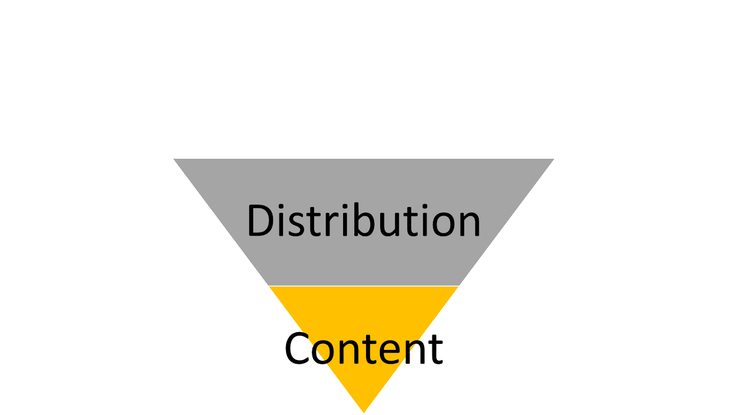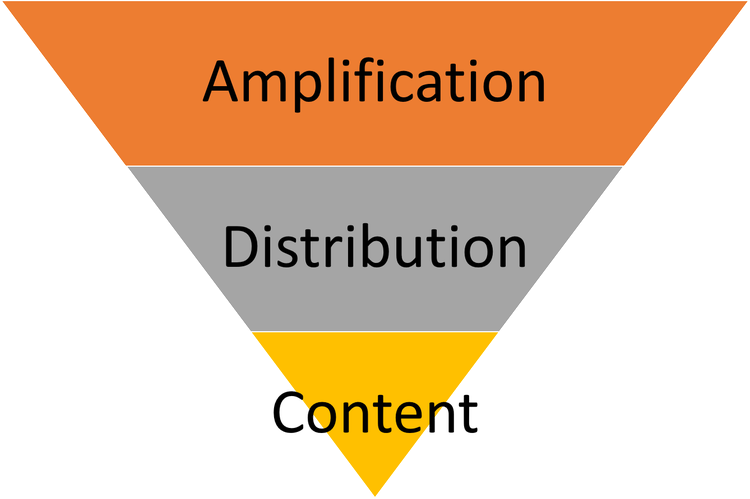Getting the Most Out of Digital Marketing for Your Small Business
The digital revolution has empowered customers to converse with businesses, it has empowered anyone to become an entrepreneur, and it has allowed businesses to market, communicate, and advertise without using costly intermediaries.
It has also made it difficult to figure out where to start with so many opportunities available to business owners.
More than ever, today’s business owner needs to set a digital marketing strategy before building the dedicated marketing workflow that goes with their digital marketing plan. Let's look at some online marketing strategies available for your small business to use.
The 7 digital marketing strategies available to your small business:
- Content marketing strategy
- Local marketing strategy
- Paid media strategy
- E-commerce strategy
- Inbound marketing strategy
- Integrated marketing strategy
- Growth hacking, personal branding, social commerce, and influencer marketing
1. Content marketing strategy
Digital marketers usually distinguish between organic and paid media. A content marketing strategy is organic; it consists of creating and distributing remarkable content that makes your brand visible across digital channels -- and the only costs are those you incur for creating the content itself.
This strategy requires:
- Competitive research and analysis
- Ideation and content creation
- SEO and community management for social media
- Outreach
- Automation
In a content marketing strategy, you position your business as a publisher.
Use research tools to find content opportunities in SEO, social media, and news sites. Then, create remarkable content that's better than what already exists. Build your reach and following via social media and dedicate resources to reaching out to news outlets and influencers to propose content to share. And finally, automate as much of the process as possible.
In a content marketing strategy, you’ll rely heavily on analysis tools for search marketing:
- Keyword research tools such as Ahrefs, Google search or Keyword.io
- Audience and popularity tools like BuzzSumo and SparkToro, search monitoring tools such as Google Search Console, SEMrush, Accuranker, or SearchMetrics
- Social media management tools such as Buffer, Sprout Social, or MeetEdgar
Don't let these tools overwhelm you. Remember: They don't drive the strategy -- you do.

The aim of a content marketing strategy is to create the right content and distribute it efficiently to as wide an audience as possible. Image source: Author
2. Local marketing strategy
A local marketing strategy is focused on driving traffic to your website or your physical location from users close by. It uses real-time communication at peak times and combines relevant content publication with email marketing and local advertising.
Local marketing combines some of the following approaches:
- Location-based directories
- Local profiles on Google and Facebook
- Real-time social networks like Twitter and Instagram
- Location-based mobile advertising
- Building an email database
The first step is to register your business with its address in relevant online directories where users may look for companies (think yellow pages). The next step is to create business profiles on Google My Business and set up a Facebook business page.
Once those are in place, a local marketing strategy aims to target users geographically at relevant times. Real-time networks like Instagram and Twitter are good for this, and geotargeted advertising on Google My Business and from a Facebook business page performs well, too.
New types of local targeting via mobile phones are emerging. While they provide a new direct communication channel, they also represent an intrusive and interruptive type of advertising that can upset users and create a negative brand sentiment for your business.
One of the strongest tools for creating local traffic remains emailing an existing user database. You should start building an email list right away via loyalty programs and offers that require registration so you can communicate with your customers directly via an email marketing tool when needed.
3. E-commerce strategy
In an e-commerce strategy, you aim to generate online traffic to a specific product or service you offer in an e-commerce store. It involves the steps below:
- Setting up an online store
- Integrating with search and social
- Connecting to marketplaces
- Promoting products profitably
- Incentivizing affiliates and partners
- Building a client database
Your first step here is to set up an online store and connect it with your social profiles and your website. Next, connect with marketplaces and shopping engines such as Amazon, Walmart, Google Shopping, and Bing Shopping. Marketplaces can become your primary sales channel, especially if you also advertise there.
The key to succeeding an e-commerce strategy is a great user experience, a controlled customer acquisition cost, and maximizing your customer relationship management to optimize the lifetime value of your clients.
4. Paid media strategy
While the organic media strategy doesn't use advertising, a paid media strategy exploits it to the fullest. It works best when organic media is already optimized and aims to establish an advertising mix that generates profitable results.
It can involve one or all of the following:
- Paid search
- Paid social
- Native advertising
- Programmatic advertising
A paid media strategy typically has two types of marketing campaigns. The first type is the always-on campaign, which supports the brand and is constantly activated.
The second type is seasonally driven, or synchronized with events, promotions, or specific target audiences and is designed to be instantly profitable. A paid media strategy aims to identify the ideal mix of paid advertising across all of your channels to generate measurable and profitable results.

The aim of a paid media strategy is to amplify content widely to reach the right audience. Image source: Author
5. Inbound strategy
An inbound marketing strategy is strongly anchored in the content marketing strategy and is often used for products or services with a long or complex decision-making cycle, as in B2B. Inbound marketers typically engage in the following:
- Content marketing
- Marketing automation
- Lead scoring
- Email nurturing
- White papers, webinars, and livestreams
Content marketing in the form of articles, videos, white papers, webinars, and live sessions are used to generate interest in your business and allow for a first level of contact. This will typically involve registering an email or following your business profiles on social media.
The inbound strategy subsequently automates interactions with prospects and nurtures them using more of the content types mentioned above via several interactions over time. Marketing automation tools help scoring leads in order to drive to a contact stage where they can be managed as sales opportunities.
6. Integrated marketing strategy
In an integrated marketing strategy, you focus on adapting your marketing funnel to the entire user journey. You are not only focused on converting prospects into customers, you are also building your brand and creating awareness about your products and services.
The customer journey has become a complex path of many touch points spanning several channels. An integrated marketing approach aims to accompany the customer by taking this behavior into account and synchronizing the digital and offline marketing channels.
An integrated marketing strategy requires a detailed marketing plan and typically takes all of the following channels into account:
- SEO
- Social media marketing
- Paid search
- Paid social
- Email marketing
- Influencer marketing
On our list of strategies, this is perhaps the one least suited to small businesses, as they typically don’t have the resources to span such a large array of channels. But those who master the approach generate superior results in the long run.
7. More strategies: Growth hacking, personal branding, social commerce, and influencer marketing
For small businesses with limited resources, it can be tempting to embark on strategies like growth hacking, personal branding of the business owner, social commerce, or influencer marketing.
These are all very attractive and valid strategies, but they aren't as simple and straightforward as they may sound. They require just as much work as the above strategies. Read more about personal branding and social commerce to see if they are sensible approaches for you.
Growth hacking requires you to generate a long list of marketing ideas for your small business and test them systematically in order to create your own set of digital marketing tactics, combining inexpensive lead generation and automated conversion mechanisms. You can start by implementing as many digital marketing tips as you can, and slowly narrow down until you can identify the ones that work well for you.
Influencer marketing has been very popular for the past few years, and used in the right way, it can be a great way to build brand awareness and reach new audiences.
It requires a large investment of time and money into identifying and contracting with the right influencers and, even then, can't guarantee any business outcomes.
Plan your work and automate your plan
An old saying attributed to Napoleon Hill is to “Plan your work and work your plan.” It applies well to the present scenario for mastering digital marketing in a small business. But today, it's not enough to work your plan; you need to automate it. You need to invest time and resources into building your strategy.
Once it's set, you need to choose the right marketing tools for your strategy and automate as much of the process as possible. Small business marketing has become a strategy-driven game.
Alert: our top-rated cash back card now has 0% intro APR until 2025
This credit card is not just good – it’s so exceptional that our experts use it personally. It features a lengthy 0% intro APR period, a cash back rate of up to 5%, and all somehow for no annual fee! Click here to read our full review for free and apply in just 2 minutes.
Our Research Expert
We're firm believers in the Golden Rule, which is why editorial opinions are ours alone and have not been previously reviewed, approved, or endorsed by included advertisers. The Ascent does not cover all offers on the market. Editorial content from The Ascent is separate from The Motley Fool editorial content and is created by a different analyst team.
Related Articles
View All Articles